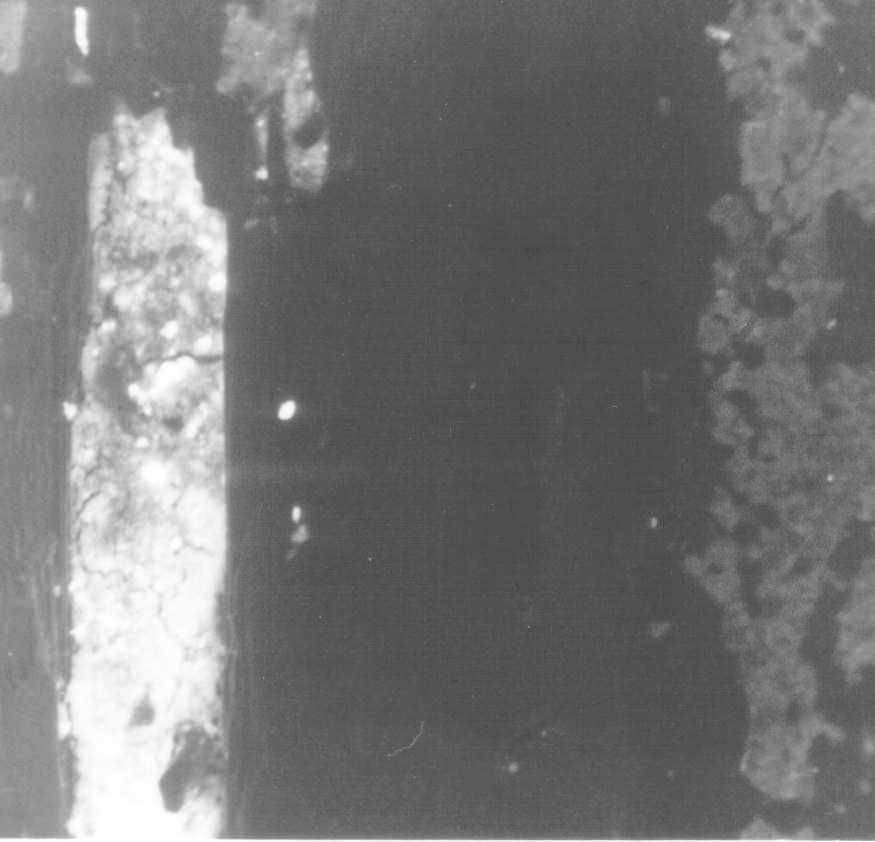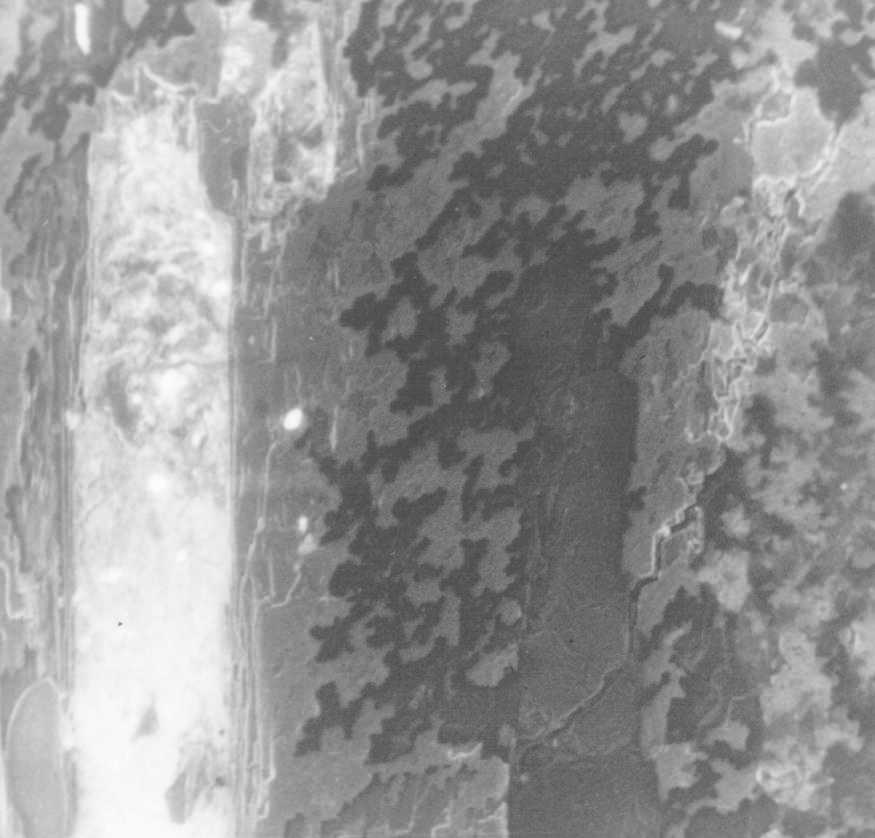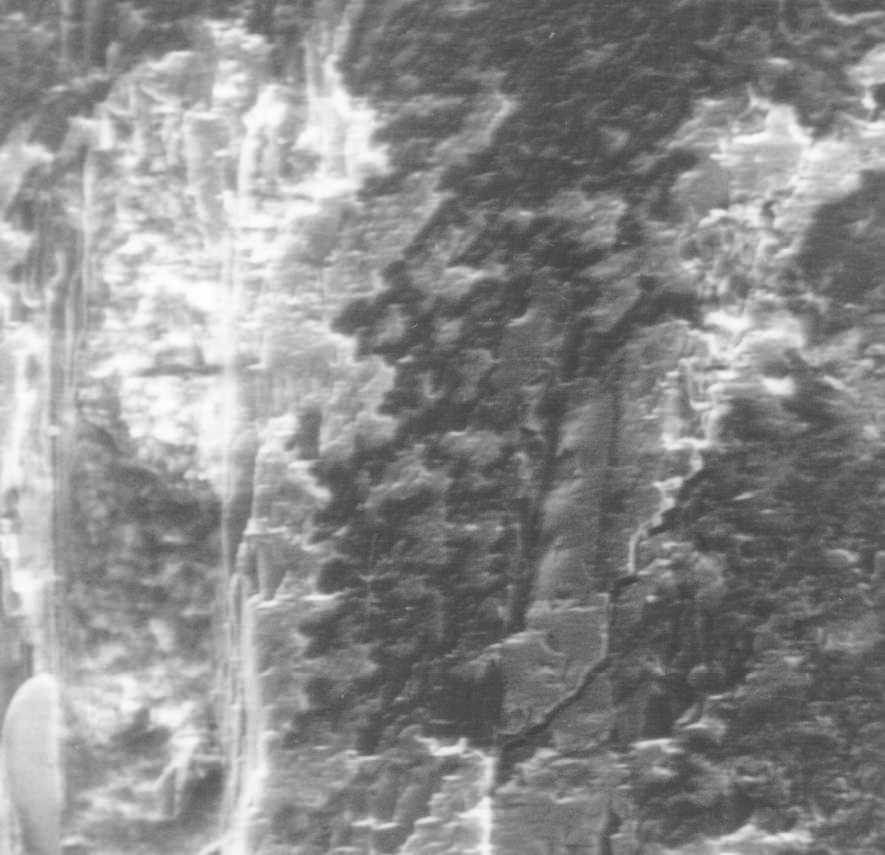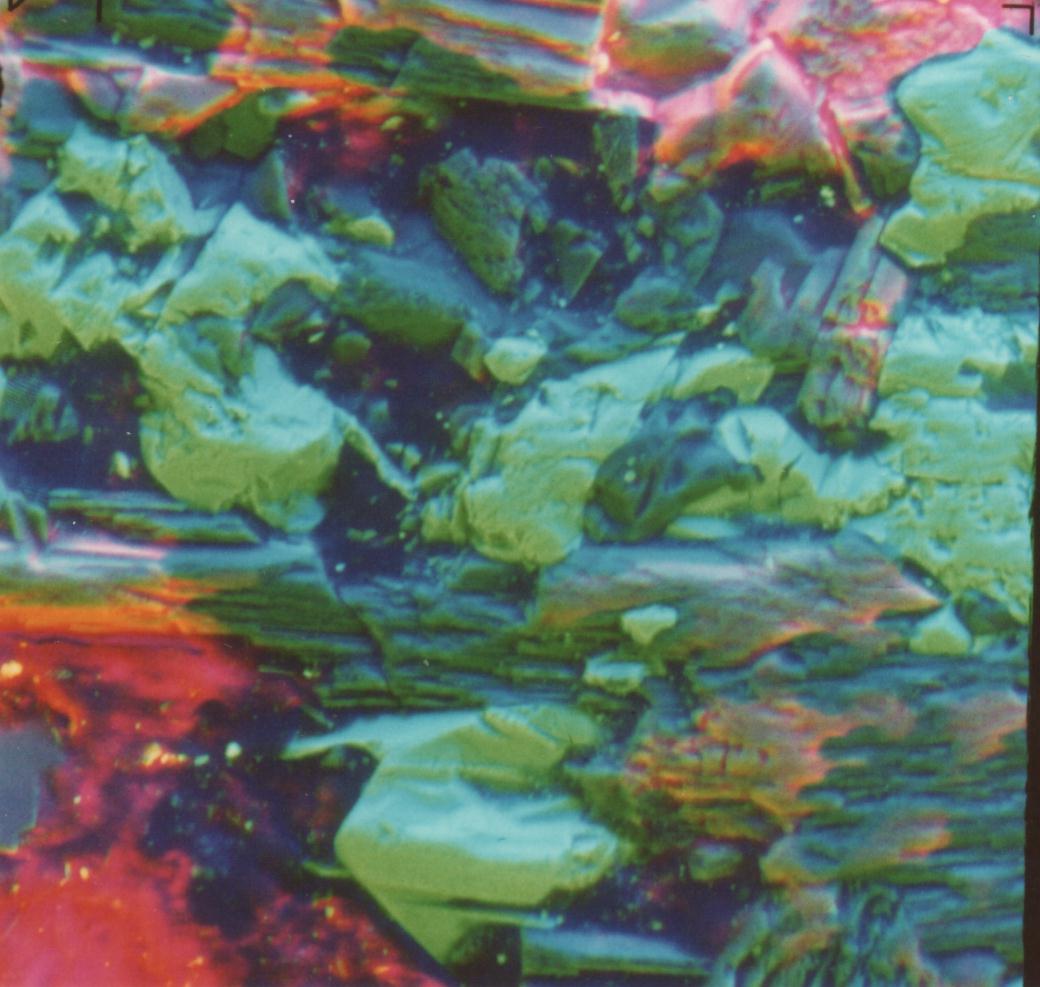ESEM Science and Technology
Low Bias GDD and CL (1986)
The ESEM with the gaseous detection device (GDD) yield
information never seen before. For example, the contrast below emanates from the
same surface area of a mineral in different detection modes (11, 12, 36 , 26). It is not always
necessary to apply a high voltage
on the GDD electrode, as low bias, of the order of 10 Volts, is also
possible to use and still obtain a variety of contrasts. For example,
strong BSE contrast is evident as we increase the gas pressure, since the BSE
have an amplification factor arising from their own high energy creating
electron-ion pairs. The secondary electron signal predominates at the
lower pressure, where the BSE escape through the gas without many
collisions. The overall contrast is determined by the interplay of gas
pressure, electrode bias and electron position and configuration as it was
further demonstrated elsewhere (34 ,36, 37, 38). Low electrode bias results
in strong BSE imaging by the high yield of initial
gaseous ionization by the signal electrons at very high pressure towards atmospheric
levels. However, the low voltage operation of the GDD providing some
special/additional benefits in the imaging arsenal of the technology, has not
been exploited by commercial ESEM yet.
|

Cathodoluminescence, 1.5 mbar water vapor. |

Gaseous
scintillation, 1.3 mbar air. CL+SE contrast. |
|

Gaseous ionization, 1.2 mbar air. SE contrast. |

Gaseous ionization, 4.1 mbar air. BSE contrast. |
|

Topography, atomic number and surface chemical contrast of a mineral in a single micrograph composed from the output of a system of backscattered electron detectors and GDD (21). |




